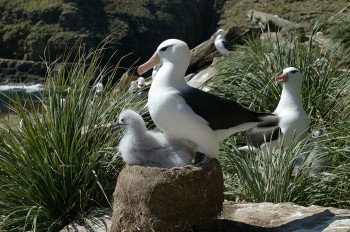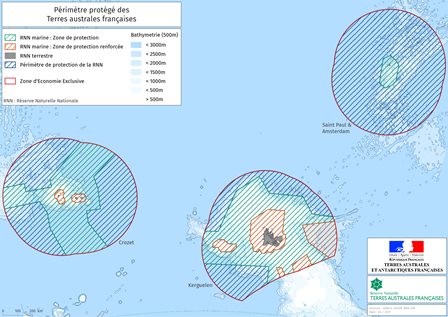Graeme Elliott and Kath Walker (Albatross Research, Nelson, New Zealand) have produced a report presented last month to a meeting of the Conservation Services Programme of New Zealand’s Department of Conservation on their recent research on the globally Vulnerable Antipodean Albatross Diomedea antipodensis breeding on New Zealand’s Antipodes Island.
“Antipodean wandering albatrosses have been monitored since 1994. They increased in abundance between 1994 and 2004 at about 6.3% per annum, but since 2004 have declined: males at 5% per annum and females at 11%. The population of breeding females is now only 25% of its 2004 level. At the current rate of decline there will be only 250 pairs of Antipodean wandering albatrosses in 28 years. Coincident with this decline there has been a reduction in nesting success. The rapid drop in numbers has been caused by high mortality, particularly amongst females. The most likely cause of this decline is a change in ocean conditions which has led to lower nesting success and birds foraging in areas with a higher fisheries bycatch risk than before. A comparison of satellite tracking before 2004 and geolocator tracking after 2004 indicates a dramatic shift in the foraging range of females. They now often forage to the north-east of New Zealand and in two areas off the South American coast: near Juan Fernandez Islands and close to the south Chilean coast. Since males visit the Juan Fernandez and north-east New Zealand areas only rarely, and since they have much higher survivorship it seems possible the high female mortality might be happening in these two areas. Understanding the causes of and solutions to the high female mortality is urgently required as the high and sustained rate of decline has put this species into New Zealand’s “Nationally Critical” conservation status category.”

An Antipodean Albatross pair on Antipodes Island, photograph by Colin O'Donnell
Reference:
Elliott, G. & Walker, K. 2017. Antipodean Wandering Albatross Census and Population Study 2017. [Nelson]: Albatross Research. 13 pp.
John Cooper, ACAP Information Officer, 28 April 2017

 English
English  Français
Français  Español
Español 


